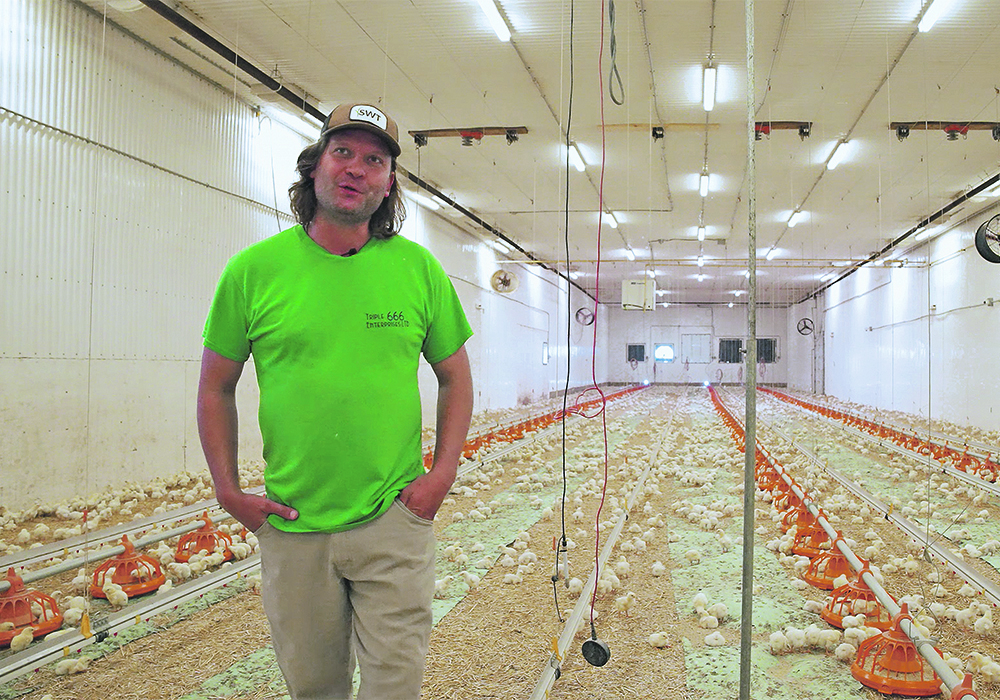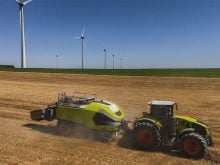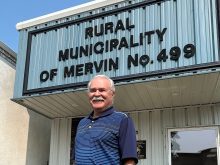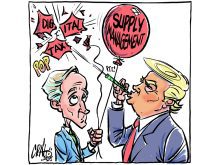Producer left behind a career in finance to return to the family grain farm; then he decided to become a chicken farmer
When Cameron Evesque watched the bright lights of Calgary fade in his rear-view mirror in the fall of 2018, he knew he was leaving an established, stable career behind. What he didn’t know was that he was on the road to becoming a chicken farmer.
Evesque had risen quickly through the ranks at the Agriculture Financial Services Corp. in Alberta to become manager of credit solutions.
However, he was a farm boy at heart, and the farm kept calling him back. He returned to the family farm near Cadillac, Sask., where he owns 640 acres of grain land and where his family runs a mixed grain and cattle operation.
Read Also

Producer profits remain under significant pressure
Manitoba farmers are facing down a double hit of high input costs, like fertilizer, and low grain prices as they harvest their next crop.
While living on the family farm, Evesque did a short stint with Global Ag, Risk Insurance, all the while looking for ways to farm full time.
Rising land prices and continued weather risks made him question whether buying additional land was the right move. He wanted diversification and knew from his financial management background that supply management provide stability to many farms.
Fortunately for Evesque, Chicken Farmers of Saskatchewan was accepting applications for the new entrant broiler program. In 2018-19, he qualified to buy 34,500 kilograms of broiler quota, or approximately 20,000 birds per cycle, at a reduced rate under the program. He has since leased additional quota and produces 55,000 kg per cycle.
“I believed I had zero chance of winning the new entrant quota,” Evesque said.
“They had some 150 applicants.”
One of the requirements of the new entrant program stipulates the broiler barn must be located within 200 kilometres of Saskatoon, where the processing plant is situated.
Evesque began looking for a barn because in addition to a full business plan, the application process requires the applicant indicate where the barn will be located.
“I had an offer to purchase on a barn near Biggar, and a neighbour raised a stink. Ninety-nine per cent of the people were happy to have me move in, but I went to town hall meetings over this, and in the end, because I was under a time crunch, I walked away.
“I made an offer to a father and son in Delisle, but they got cold feet about selling in the end.”
Evesque was running out of time. His last offer was a “long shot” to a layer barn owner that still had layers in the barn and had not formally put the barn up for sale.
“A lot of negotiation was required,” he said.
In the end, Evesque was successful in buying the barn. It is located 15 km from Warman and 30 km from Saskatoon. He considers it a “blessing” that he ended up there.
However, it didn’t come without stress. He had one month to convert the layer barn to a free run broiler barn — and it was January in Saskatchewan.
His nephews and family helped with the renovations.
“I couldn’t have done it without them,” he said.
“The nephews stuck around for a few weeks after the renos were completed to help.”
Evesque understood the economics of a supply managed operation, but he had no production experience. He describes the first year as “intense.”
“I had experience with cattle, but none at all with chickens,” he said.
“I had never raised a chicken. I vaguely remember chickens being butchered on the farm, but I was pretty little.”
Then on top of the stress of a new endeavor, COVID-19 hit. Evesque’s first batch of chickens arrived in February 2020, and by March 2020, the world was shutting down.
“All the producer meetings I had hoped to attend were cancelled. I had no contacts in the industry. I relied on a lot of research, reading and my feed company, and my feed rep in particular.…
“I think I handle stress pretty well, but I didn’t even meet the people at Saskatchewan chicken producers in person for over one year.”
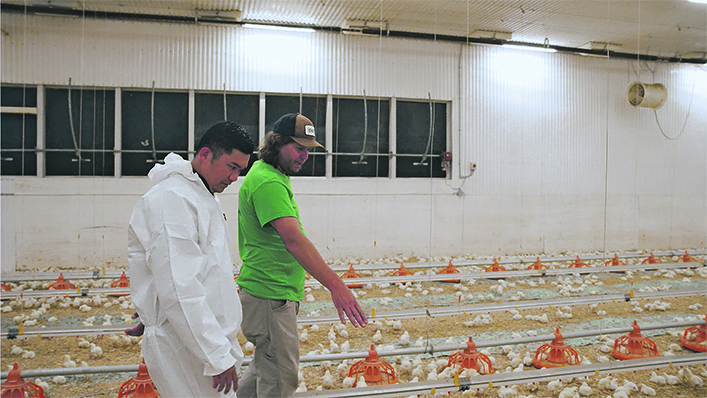
He did call them for advice, but that is not the same as seeing them face to face or having them on the farm.
The barn is fully automated, which makes his life much easier, but that was not always the case.
“I was always worried about, ‘is the computer working properly,’ or wondering, ‘is this how things should be working.’ Automation was a huge learning curve for the first while.”
The broiler barn is a good fit with the grain operation because between the 31 to 33 day cycles that Evesque aims for, there is a 22-day period of barn clean-out and disinfection. This provides an opportunity to return to the Cadillac farm and help with seeding, harvest and all the other necessary chores that go along with his grain operation.
“This year the timing didn’t seem to work out that good for harvest or seeding, but most times it does.”
He relies on help from his family with the grain operation when he is busy with the broilers.
Evesque’s gamble appears to have paid off.
He and his barn have been featured in a Chicken Farmers of Saskatchewan YouTube video that is intended to help non-producers understand the broiler chicken sector.
“It is a great lifestyle,” he said.
“I can’t think of anything else you can run by yourself, and the first couple of weeks with the new batch is very fun. It all turned out great in the end.”



